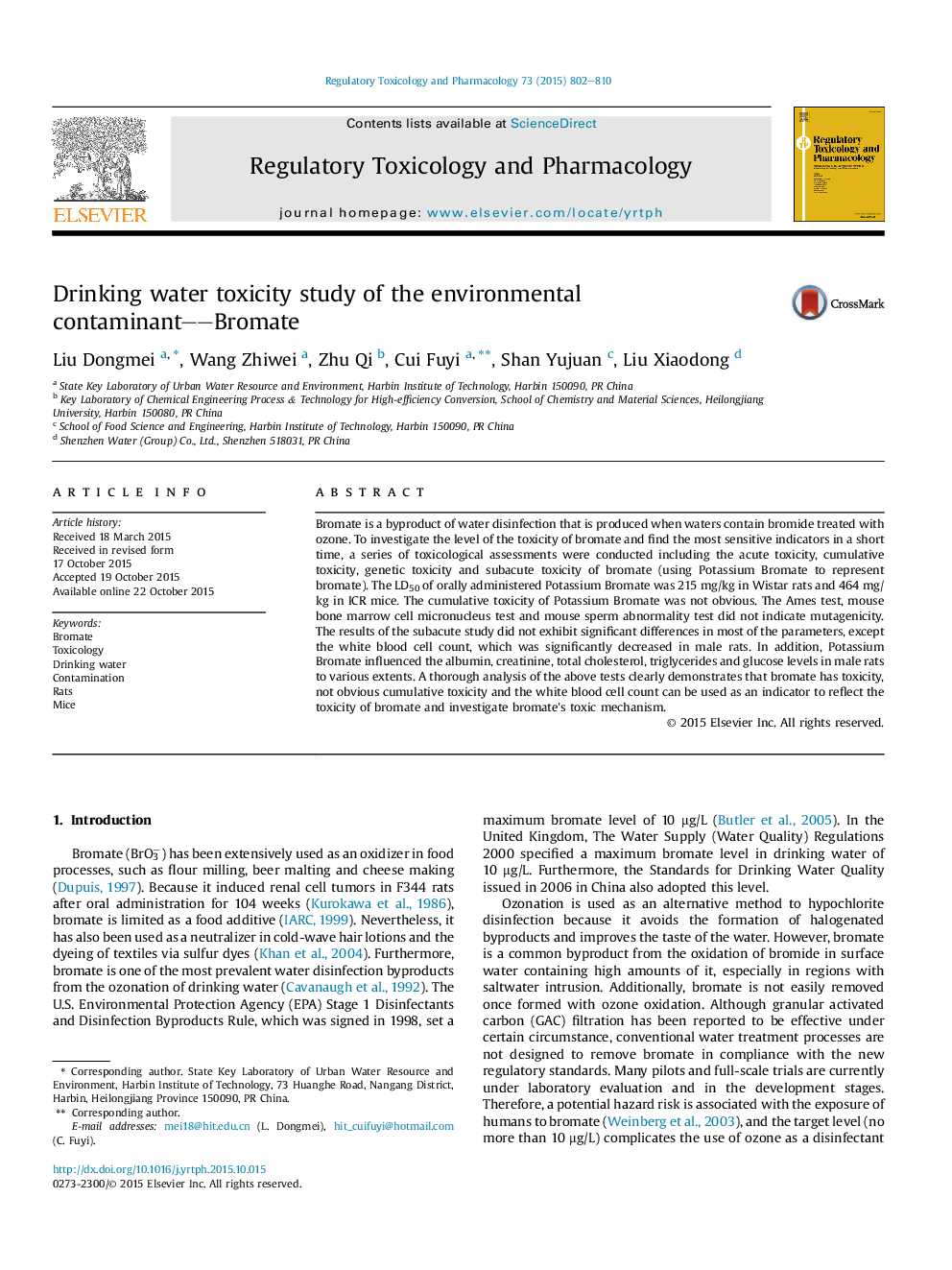| Article ID | Journal | Published Year | Pages | File Type |
|---|---|---|---|---|
| 5856225 | Regulatory Toxicology and Pharmacology | 2015 | 9 Pages |
â¢A serial of toxicological assessments of bromate were conducted in short-term.â¢The cumulative toxicity of KBrO3 was not obvious in mice.â¢The WBC in rats was significantly decreased by KBrO3 in a short time and at low dose.â¢The WBC can be used as an indicator to investigate the toxic mechanism of bromate.
Bromate is a byproduct of water disinfection that is produced when waters contain bromide treated with ozone. To investigate the level of the toxicity of bromate and find the most sensitive indicators in a short time, a series of toxicological assessments were conducted including the acute toxicity, cumulative toxicity, genetic toxicity and subacute toxicity of bromate (using Potassium Bromate to represent bromate). The LD50 of orally administered Potassium Bromate was 215Â mg/kg in Wistar rats and 464Â mg/kg in ICR mice. The cumulative toxicity of Potassium Bromate was not obvious. The Ames test, mouse bone marrow cell micronucleus test and mouse sperm abnormality test did not indicate mutagenicity. The results of the subacute study did not exhibit significant differences in most of the parameters, except the white blood cell count, which was significantly decreased in male rats. In addition, Potassium Bromate influenced the albumin, creatinine, total cholesterol, triglycerides and glucose levels in male rats to various extents. A thorough analysis of the above tests clearly demonstrates that bromate has toxicity, not obvious cumulative toxicity and the white blood cell count can be used as an indicator to reflect the toxicity of bromate and investigate bromate's toxic mechanism.
